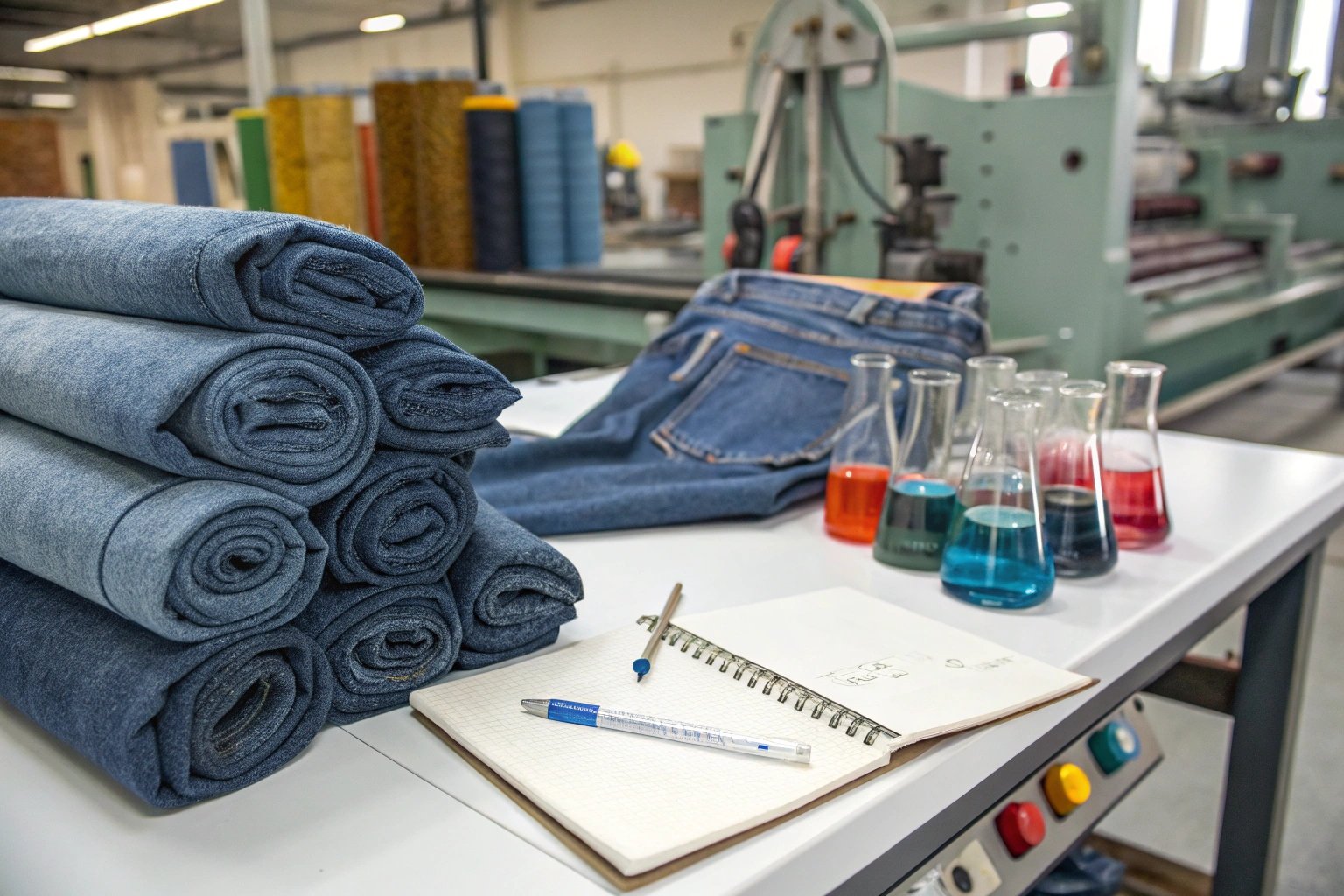Vintage denim never goes out of style—but achieving the perfect worn-in look takes more than just sandpaper or stonewashing. Today, global denim brands are turning to enzyme-washed cotton as a sustainable, fabric-friendly method to get that authentic, soft, aged appearance.
Enzyme-washed cotton delivers a smoother, more naturally faded look on denim while preserving fabric strength and using less water and chemicals than traditional stonewashing.
Whether you manufacture jeans, jackets, or vintage-inspired apparel, enzyme washing offers consistency, environmental benefits, and a superior soft hand-feel that modern consumers love. Let me walk you through what makes it a game-changer in denim production.
What Is Enzyme Washing and How Does It Work?
Not all denim washes are created equal. Enzyme washing is a biochemical process that breaks down cotton fibers using natural enzymes, creating controlled fading and a soft finish.
Enzyme washing uses cellulase enzymes to loosen fiber fuzz, reduce pilling, and gently wear away the dye from the fabric surface—resulting in a smoother and vintage-like aesthetic.
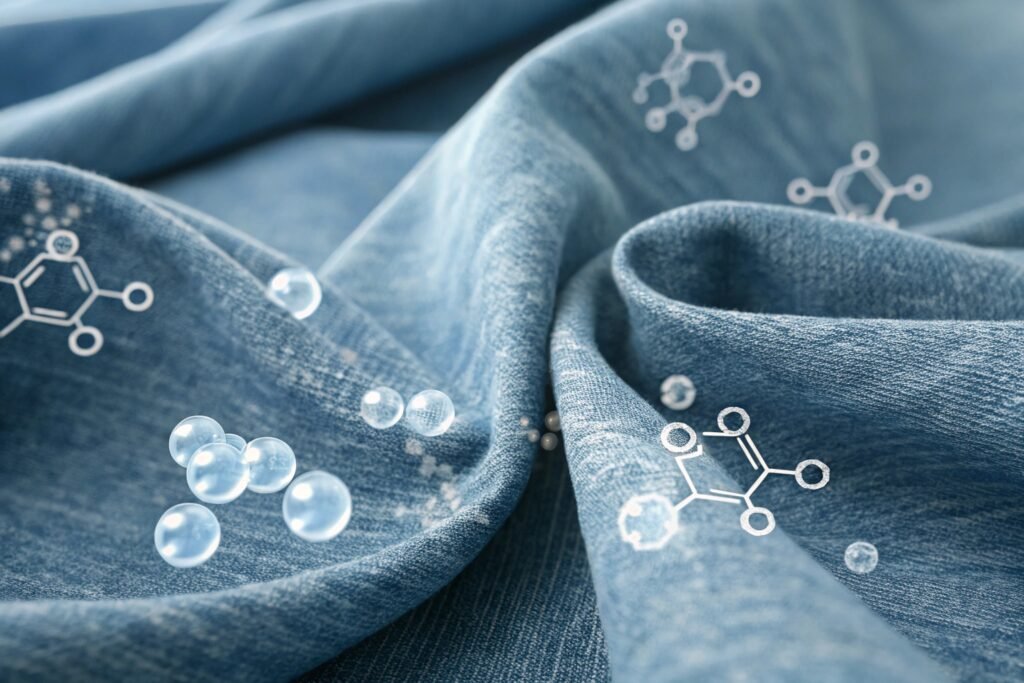
How Is Enzyme Washing Different from Stonewashing?
Stonewashing uses pumice stones that physically abrade the fabric surface, causing inconsistent results and heavy fiber damage. In contrast, enzyme washing is a chemical reaction that only targets cellulose.
You’ll avoid broken fibers, machinery damage, and heavy sludge, making it a cleaner option. Read more in this detailed comparison guide between the two methods.
What Types of Enzymes Are Used in Denim Washing?
Mainly, cellulase enzymes are used in the process. These come in different pH forms—neutral and acid cellulases—each producing a different level of abrasion. The Fashion2Fiber portal gives great insight into enzyme classes and their effect on denim.
Some suppliers even use multi-enzyme cocktails to achieve unique effects, including polishing, de-pilling, and softening simultaneously.
Why Is Enzyme Washing Ideal for Vintage Effects?
Vintage style is all about authenticity—visible wear, soft edges, and color evolution. Enzyme washing delivers this without over-processing or damaging the textile.
Enzyme-washed denim has a naturally aged look with rich tonal variation, seam highlights, and smooth fading—perfect for premium vintage aesthetics.
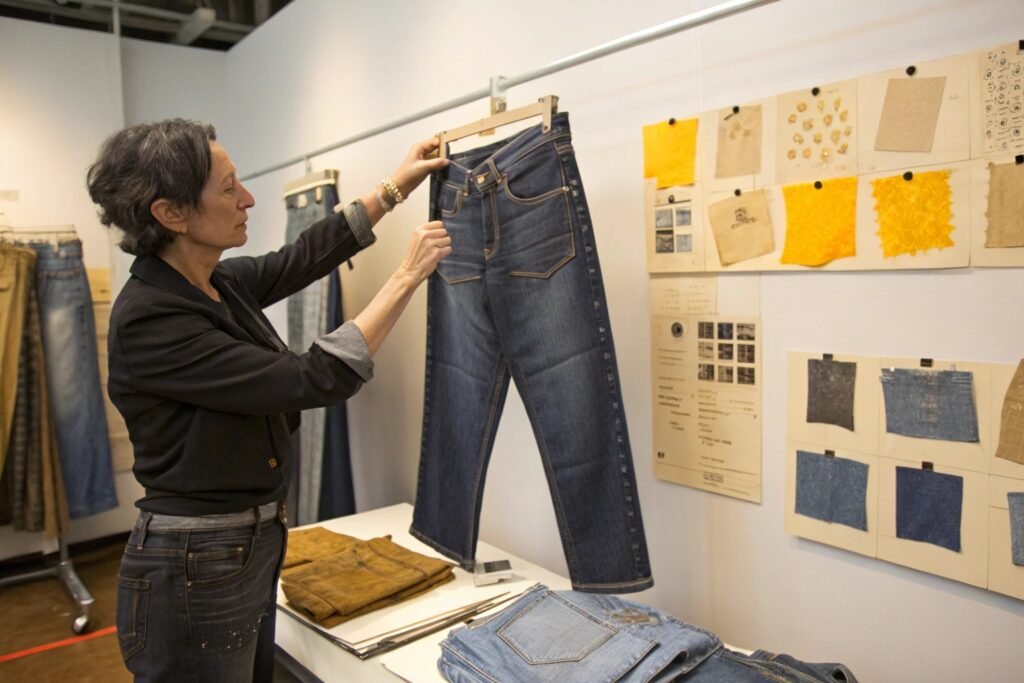
Can Enzyme Washing Produce High-Contrast Fades?
Yes. By adjusting wash time, enzyme concentration, and temperature, manufacturers can create anything from subtle fades to high-contrast whiskering and knee creases. The benefit is precision—you get a real vintage vibe without ruining fabric integrity.
Explore Denimandjeans.com for visuals on different fade levels achieved via enzyme washing.
Does It Work on Stretch or Blended Denim?
Absolutely. One advantage of enzymes is they work well with elastane or polyester blends, which often get distorted during mechanical abrasion. Enzyme-washed stretch denim retains shape, improves comfort, and achieves a balanced aged look. Learn more at The Sustainable Angle.
What Are the Sustainability Benefits of Enzyme Washing?
Eco-consciousness in denim is more than a trend—it’s now a buyer requirement. Enzyme washing aligns perfectly with this shift.
Compared to traditional stonewashing, enzyme washing reduces water usage by 50%, eliminates the need for harsh chemicals, and generates minimal sludge—making it a more sustainable choice.
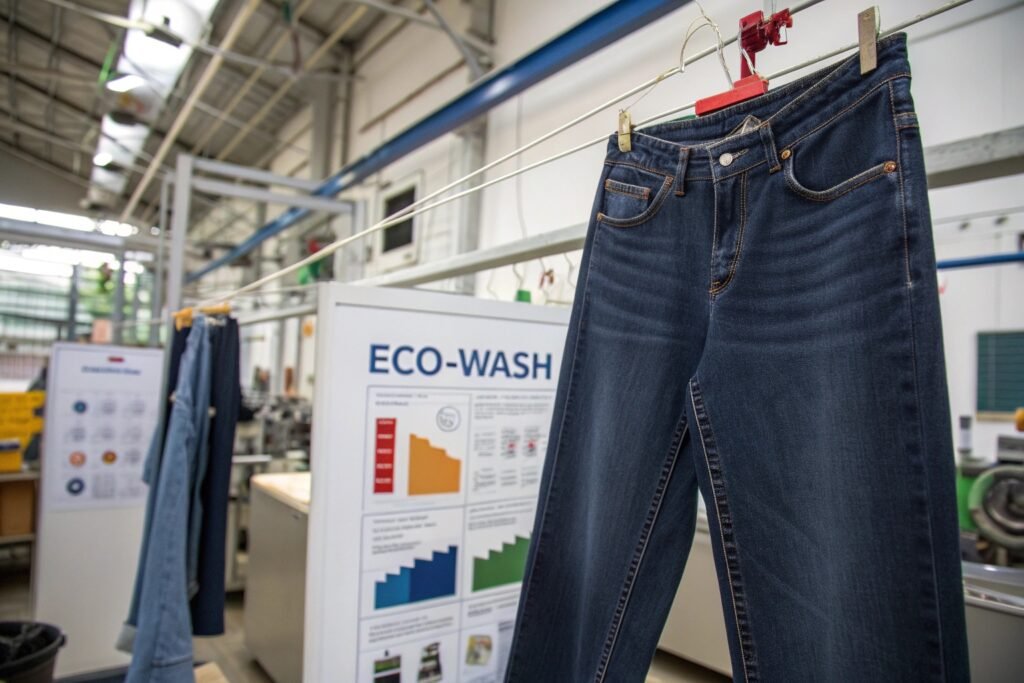
How Does Enzyme Washing Reduce Water and Energy Use?
The process is shorter and requires less rinse water compared to stonewashing, which involves multiple stages of washing and neutralizing. According to Jeanologia, enzyme-based techniques can reduce environmental impact by up to 60%.
Some systems also reuse enzymes across multiple batches, further cutting costs and waste.
Are Enzyme-Washed Garments Safer for Workers?
Yes. Workers in denim laundries are often exposed to airborne pumice dust and heavy acids in traditional washes. Enzyme washing eliminates these hazards, reducing respiratory and skin issues. For garment compliance, consult ZDHC’s wastewater guidelines.
Factories using closed-loop or low-impact enzyme systems are also more likely to pass global certifications like OEKO-TEX and Bluesign.
How Can You Source High-Quality Enzyme-Washed Cotton?
Finding good enzyme-washed fabric isn’t just about the finish—it’s about supplier capability and textile integrity.
Choose suppliers with in-house washing labs, CNAS-certified QC systems, and the ability to customize washes according to your vintage denim specs.
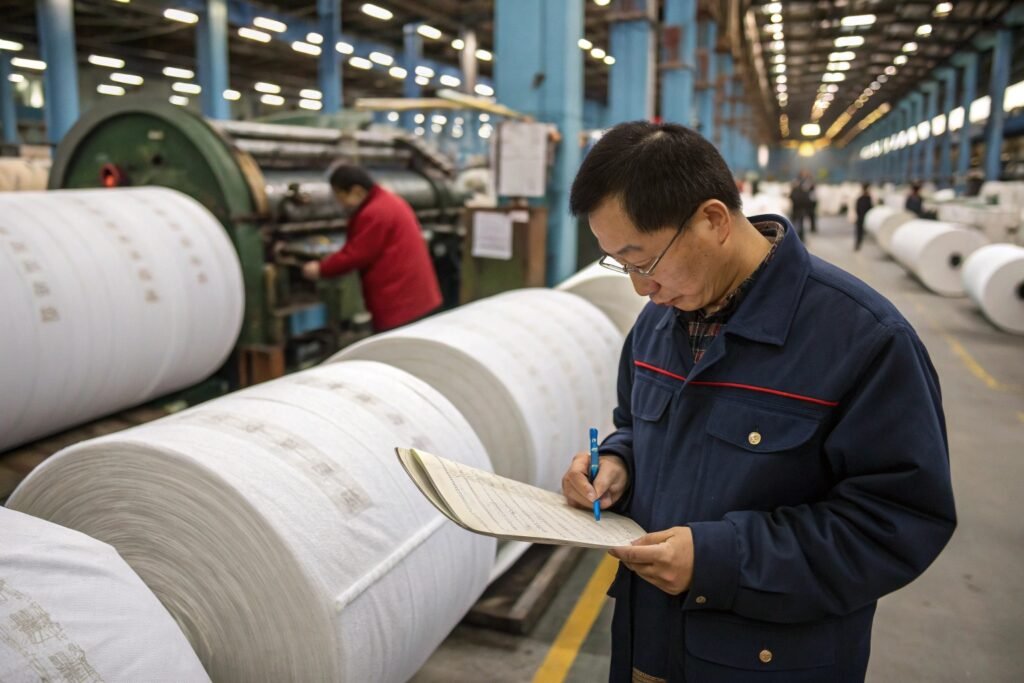
What Should You Ask Suppliers Before Placing Orders?
Here are key questions to screen for quality:
- Do you use acid or neutral cellulase?
- Can you adjust abrasion intensity?
- Do you have wash test reports?
- Can you offer OEKO-TEX or GRS-certified base cotton?
Platforms like Alibaba and Foursource list suppliers offering enzyme-washed cotton denim with real-time QC stats.
Why Work with Factories That Offer Custom Enzyme Wash Development?
Every brand’s vintage effect is unique. Some want heavy stone-like fades, others prefer soft tone shifts. Working with mills that offer R&D sampling, like Fumao Fabric, ensures you get exclusive washes that align with your brand DNA.
You can also visit their test lab virtually, and request physical samples with wash parameters included—learn more at fumaofabric.com.
Conclusion
Enzyme-washed cotton offers the perfect balance between vintage aesthetics, fabric protection, and eco-responsibility. For denim brands looking to scale while staying sustainable, this method is the gold standard.
By partnering with mills that understand both the technical and creative sides of enzyme washing, you unlock unique looks, softer garments, and a cleaner future for fashion.

